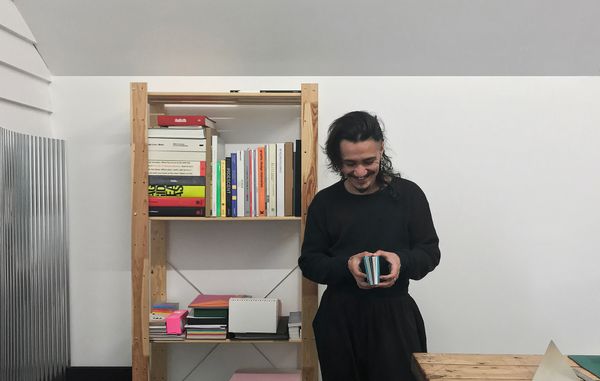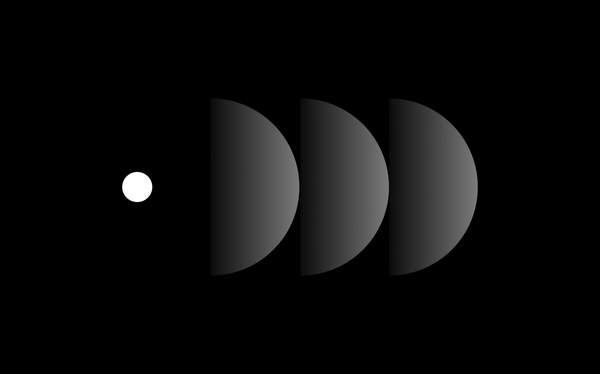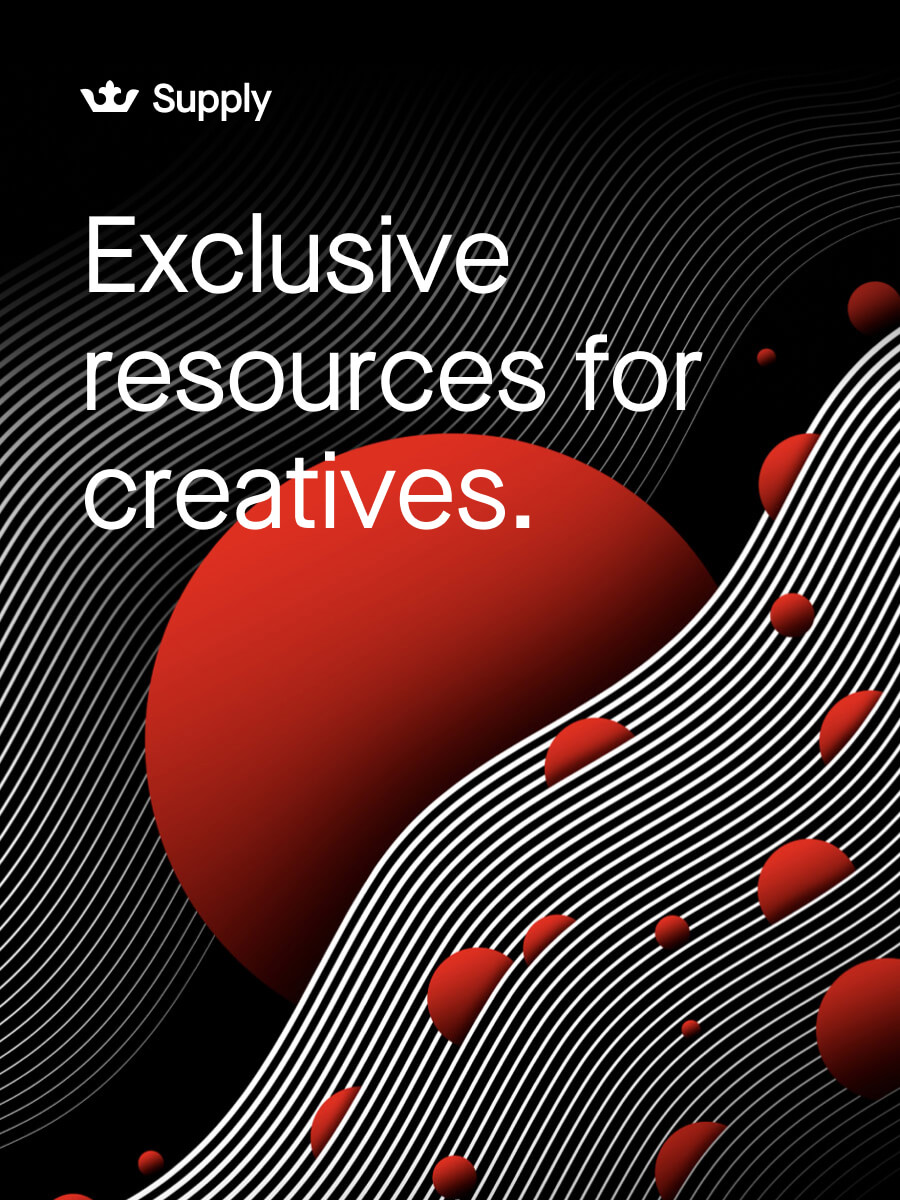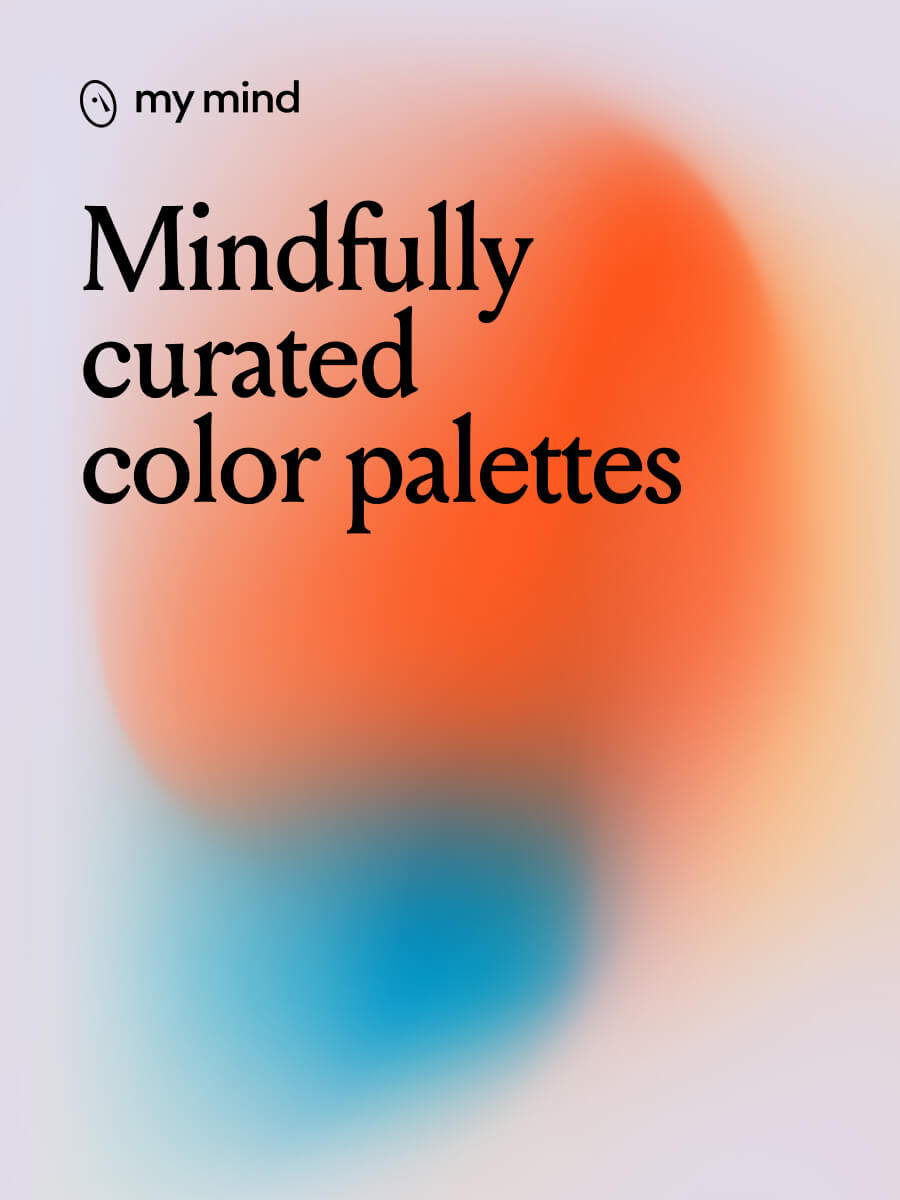Design in Greece 🇬🇷 featuring The Birthdays Design
Published
Our latest addition to the Design Around the World series welcomes The Birthdays Design, an art direction and graphic design studio based in Athens.
Through this series, we've learned much of our understanding of other design communities is based on outdated and generalized information. While what we can read on Wikipedia may be technically accurate, it doesn't account for the complexities and nuances of a culture, place or people.
Likewise, one conversation about a design community cannot summarize or define it. But it does open the door for more learning, and more connections.
It'd be safe to guess many people's perception of Greece is based on its ancient art and philosophy, modern travel photography, and Greek letters appropriated by everything from college fraternities to yogurt companies. As we learned in this interview, those perceptions are so strong, they do affect Greek design to this day. But there's a lot more to it than that. We scratch the surface here with Konstantina Yiannakopoulou and George Strouzas, founders of The Birthdays Design studio.

Hey, Konstantina and George! Tell us a little about yourself. How many people are on your team and why did you decide to open a studio together? What kind of work do you do?
Our office consists of the two of us, and we host two internships per year. We met during our studies at a college of visual communication, and what brought us in contact then was our interest in music, the design of vinyls, concert posters and design history. This interest in music influenced the name of our office, a tribute to Nick Cave's first band, "The Birthday Party." Now that we are 35 and we do not consider ourselves so punk, we also use the abbreviation "Studio TBD."
Before our studies in graphic design, we both had different focuses, one studying public administration at university and the other computer network systems. We have been working together since 2013 while working in other agencies and companies, and we officially started the studio in 2017, when we decided to dedicate ourselves completely to it.
We don't consider ourselves as having a particular visual style, and our aesthetics might be described as a combination of two sides of the same coin. Our work is characterized by diversity, as we try to challenge ourselves by learning from each project or person something new. We seek to think within the given content and context, not separating design from its environment or restricting its existence in mere selling terms. To let it out there to play its part, as part of the wider environment in which it belongs, is unavoidable. We always like to have this in mind while designing.
An important part of our free time is related to research projects. Most recently, we completed a two-year research project within the Vakalo design school here in Athens. Other research projects focus on font design and case studies, such as TBD Armin. TBD Armin is a study but also a form of typographic experimentation taught by Armin Hofmann at the Basel School in Switzerland. We are very happy that this study has become really popular these days. It's like so many people from different parts of the world paying the same tribute to Mr. Hofmann. It's amazing what an educative technique can do after so many years!

Is there energy in the local design community in Athens? Do many platforms and events where you can connect with other designers?
Athens has an interesting and vivid graphic design scene. However its publicity is quite limited to platforms or events, if we think of other cities abroad.
It would be unfair not to mention, perhaps, the most established event for design, Design Athens, which hosts designers from Greece and abroad, as well as EBGE, the Greek Graphic Design and Illustration Awards, which is accompanied by a ceremony. Other important meeting points, where the community is exposed to sectoral issues, is the International Conference of Typography and Visual Communication, and Digitized, a digital design conference with notable speakers from the global scene.
"A 'Greekness' in design exists from the moment the Greek letters are placed, which is a blessing and a curse."

Athens is famous for its ancient arts, culture and learning. But I’m less familiar with the modern arts and design coming from Athens or Greece overall. How would you describe the design you see from Greek designers today? Is it influenced by your culture, history, or environment in any way?
The connection of the Greek designer with the past and the environment is possible in places that are not purely obvious and immediately explainable, as we believe that it happens to any designer anywhere in the world. This transmitter-receiver relationship certainly exists, but it involves a timeless complexity and is difficult to summarize in specific stylistic features, since design is a meeting point of many such material and immaterial stimuli of the past and present.
Regarding the influence you mention, a "Greekness" in design exists from the moment the Greek letters are placed, which is a blessing and a curse. A blessing because it automatically testifies its origin, filled with its diverse and rich features, and a curse because it needs special, careful management to avoid leading to clichés or caricatures – unless, of course, that is the goal. We have come across many such examples even today, such as tourist items for sale that imitate the archaic capital font, which in many cases further limit this dimension of typography rather than evolving it.
This is an example on the edge, and the Greek design scene is by no means limited to this. On the contrary, precisely because there is a particularity in the use of Greek letters due to their special physiognomic characteristics, it has led designers to a more open, non-unilateral and confident design dimension, avoiding key visual summaries or general conclusions. A summarized word is flexibility, which we believe is the result of a deeper understanding of the past, that has nowadays created its own stigma in the current design scene.

It seems that Greece is still recovering from the economic crisis, and COVID on top hasn’t helped. How has this affected the creative industry? What kind of jobs are available for designers in Athens right now?
The COVID crisis is coming as a cherry on top, after the country's many years of economic crisis. It has affected all sectors, including the creative sector, and we expect a deep downturn in the economy as we are directly connected to the market. Designers will have to find once again ways to adapt and rearrange the services we offer, tending more to digital experiences since many services related to natural spaces, museums, exhibitions, events or even retail branding seem to be reducing.
Obviously, this greatly affects jobs. Graphic designers at the moment are called to offer a wide range of skills because there are no longer clear boundaries in new jobs, since specialization is not required. We meet this a lot in the existing job listings.

What does good design mean to you?
In our view, good design is timeless design.
It is a difficult task because "timelessness," as a meaning, is applied to something ephemeral, which is most of the subjects of our work as designers. So it becomes philosophically incompatible with the very nature of the work. But that makes it something revolutionary, even utopian. It lives in the now, it is a child of its time, but it wants to live in the past as well as in the future.
Nevertheless, good design is not only related to the designer, but also to society in general. We must recognize its role in important social issues, and accept responsibility on our part.

I know it varies from client to client but generally speaking, do clients in Greece appreciate good design and understand what it takes?
We are happy to meet people who understand the value of design and can enter into a productive collaboration, who are deeply interested in their subject and therefore in the designer. But of course, there are those who are unable to appreciate or understand the interim procedure (which is what actually leads to design results) and we don’t expect that from the early beginning of a collaboration.
Perhaps this misguided approach is not necessarily related to them, but to a more general perception or misunderstanding that has been established around the industry. In general, however, there are notable clients in Greece who appreciate and trust the collaboration with the designers, and many times they have seemed to exceed expectations. But the effort of designers never stops. Nothing is self-evident.

I read that Greece hired a chief creative officer for the country, to work on the country’s “narrative” and apply design thinking to issues the country is facing. What do you think about this? Do you think good design can impact your country’s society and solve larger issues Greece faces?
It is a positive thing that our government has hired a professional to build this narrative. It is very unjust the way Greece has been promoted in the past.
We ourselves hope for something coordinated, methodical and effective in terms of highlighting a modern and integrated image of the country to the outside world.
Obviously, tourism is an industry that should thrive and emerge in the best ways, as it has direct effects on the economy. But the COVID era has shown that even these established foundations are shaken. The country can no longer rely solely on tourism, and it cannot be a panacea for a better tomorrow either. It is necessary of course, but not the only necessary.
Greece's problems are much deeper, and it requires first an acknowledgment of mistakes and omissions, and then a collective and coordinated effort to create an important framework. In this context, design thinking is applied not superficially, but in substantial structures and with constructive cooperation within these structures.
"We do not consider a cultural identity something static, but the opposite. It is constantly evolving, yet influenced."

Globalization, especially American influence, is on the minds of many designers. Some feel it’s homogenizing design and contributing to a loss of a country’s cultural and visual identity. What’s your take? Has globalization affected Greek design in any noticeable way, either positively or negatively?
As we noted before, we do not believe there is a loss of cultural or visual identity of a place due to our influences, for the simple reason that the use of our letters brings us back to reality.
Even if you have been dramatically affected by something, it reminds you of where you are.
For example, we design covers for Greek publishing houses and sometimes, through design exploration, "West world" influence can make sense, while other times it can be a caricature. We have researched book covers of the past – and mention this application because it is the most massive medium of typographic expression in Greece, along with road signs – and these examples are of incredible interest. Even if those covers were then influenced by something else, we are influenced by them today, and that is what ultimately creates cultural continuity – but not in the context of a nostalgic mood or of preserving a tradition.
Another example from publishing houses: Some have to adopt the same covers as those of abroad (i.e. the original version) by adjusting the Greek title. And indeed the visual result, the tone of it, is completely different and sometimes disappointing, because Greek letters (even the actual translation of the original title), carry their own autonomous, expressive entity and need another handling.
So we do not consider a cultural identity something static, but the opposite. It is constantly evolving, yet influenced.
As the way of speaking and writing has changed, so has the way we process and perceive images. Realizing where you are (that is, that we are part of a global scene, in which you automatically influence and get influenced) leads to design maturity rather than dry imitation.

What is the quality of design education in Greece? Do good design schools exist locally, or do most people study elsewhere?
In Greece there are not so many institutions or schools where you can learn graphic design and visual communication. But each of the existing ones has its own legacy, identity and approach.
In the past, students increasingly studied abroad because they went to countries with a longer tradition in graphic design, such as England or the Netherlands. We believe that this has changed due to the growing popularity of design, but also due to the cost of studies.
The BA programs are also generally not much different from those abroad, and the importance lies in how a student with a personal interest in the subject will respond. If there was something we would like to see in Greece's design education, it would be research and the theoretical background of studies. And the interaction with other disciplines, such as investigative journalism or social sciences or humanities.

What impact does your social media presence have on getting new clients and self-promotion in general? What works best for you?
Social media for us is just another way of showcasing our work, and we must admit is really time-consuming! As for the clients, they often visit only media accounts and not websites at the time being. It’s nice because we stay updated and can easily interact with people from all over the world. And since we don’t get lost in the formality of emails, this is getting more interactive and leading us to more collaborations.

In your opinion, what are 5-10 design studios from Greece that everyone should know?
It is extremely difficult to choose, five, 10 or even 20 design studios because we will definitely leave out designers who do a fantastic job. So we would like to focus on some people who offer something different but relevant to our industry.
1. Tind Extraordinaire - The work of Manolis Angelakis, a master screen-printer who has greatly helped to popularize silk screen printing as a significant printing medium.
2. Greek Fonts Society - Initiated by T. Katsoulidis & G. Matthiopoulos, an important documentation of historic evolution of Greek typography.
3. Blaqk - The amazing artist duo of G. Paragrigoriou & C. Tzaferos, that master forms of calligraphy and geometry, in collaborative compositions, applied on all kinds of surfaces.
4. Duende Fine Bindings – The work of G. Evangelidis, a bookbinder who is devoted to keeping the materiality of books alive!
5. The Athens Zine Bibliotheque - Run by P. Theofilatou & T. Papaioannou, a library collecting zines of independent publishers, artists and more.

And now to our last question: How can all designers and design communities do a better job of communicating with each other? How can we become more engaged with the Greek design community? Are there any blogs or specific magazines we can follow?
All designers and design communities can do a better job of communicating with each other by simply communicating with each other. Through events, discussions, exhibitions, workshops etc., and by highlighting the important matters of each period.
You can become more engaged with the Greek design community by going directly to the source – to the designers themselves, since there is no strong publication material behind us.
On a digital platform, you can visit, +design, a blog for news related to the Greek scene. An important source also is the archive of visual communication, which is probably the first organized design archive in Greece, selected and curated by Dimitris Legakis. And the Greek Fonts Society, which is an important, detailed documentation of the historic evolution of Greek typography.
Finally, we would like to announce a new engagement of ours in collaboration with Miltos Bottis: the Logo Archive Greece. It just started and will function as an archival material of logos in Greece, focused on the decades 1960-1990 and early 2000. It is part of the International Logo Archive, with designers and researchers working hard to create the respective archive of each country. This arose from the need to trace and then disseminate the design heritage of Greek design scene, which contains examples that are difficult to trace or collect in an organized and accessible archive. You can follow it here.
Read more
© 2021 House of van Schneider LLC
All rights reserved.
MORE ABOUT TVS
About DESK
Curated mixtapes
DESK partnerships
BECOME A FRIEND
Twitter
Dribbble
Instagram
We're sorry, our pandas couldn't find any articles
Why don't you take a look at popular topics like
Design, Productivity or Self-Improvement?








